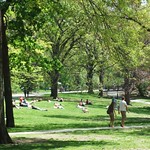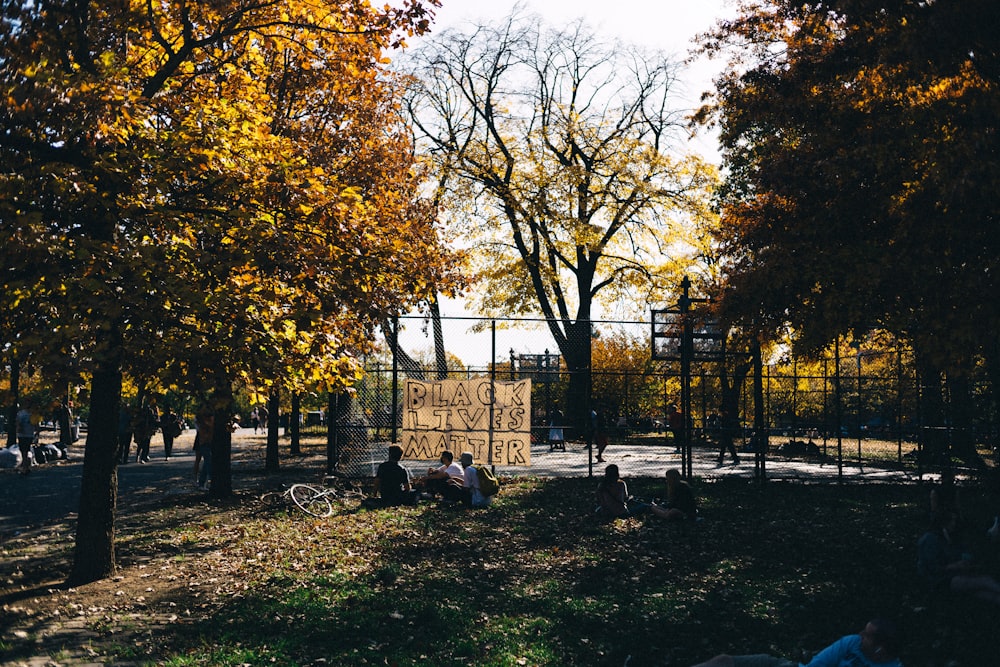“Green spaces are not an amenity, they are a necessity.”

The biophilia hypothesis, first advanced by Edward Wilson in 1984, states that human beings have a genetic tendency to seek out nature; therefore, we feel less like ourselves without it. Research bears this out: simply spending time in nature is beneficial for human health.
Living near a green space such as a park, sports field, community garden, forest, cemetery, or other outdoor space decreases stress, mortality rate, and anxiety when regularly utilized. And not only can green spaces decrease physical symptoms of stress—cortisol levels, heart rate, and blood pressure— they can also have genetic effects.
But what does this mean for the 63% of Americans, who live in cities without a lot of access to green spaces? This became a particularly pressing question during the recent COVID-19 pandemic.
The Pandemic’s Effect
In March 2020, nearly 4 billion people worldwide were advised or mandated to be on lockdown to help halt the spread of COVID-19. Friends and family were separated for what felt like an eternity, social gatherings were a “no go,” and we could forget about indoor dining.
Subsequently, stress skyrocketed into a mental health crisis. The U.S Census Bureau found that 31% of Americans reported symptoms of anxiety and depression in December of 2019. By December of 2020, 42% of Americans reported feeling anxious or depressed.
The whole world felt isolated, but some populations suffered more than others.
Unequal Green Spaces
“City residents don’t all have the same access to the benefits of green space.”

Urban residents living in nature-deprived environments, such as apartment buildings, generally had decreased access to green spaces due to lockdown rules, quarantine, and fear of infection. This was even more strongly pronounced for urban Black or Latino individuals and members of low-income communities, who often had very little or zero access to green spaces.
In NYC, for example, access to parks in low-income areas is 21% less than average compared to high-income areas. For those who are low income and Black and Latino, there is 33% less availability.
Additionally, the spaces that these communities have access to are poorly funded, and feature little to no vegetation. Park sizes averaged 7.9 acres in Black communities compared to the 29.8 acres that their wealthy white counterparts enjoyed.
NYC ranks 11th in green space walkability and other natural amenities—this, in the most populated city in the nation.
Rural residents, in contrast, had an entirely different experience. They could utilize their private green spaces, like back or front yards, take walks around their neighborhoods or local parks or even have social gatherings in their yards. They felt, on average, less alone and, in some cases, rejuvenated by the pandemic without “business as usual.”
A Call for Green
Healthy cities mandate green spaces, realizing that they should no longer be a luxury just for higher income residents, but rather a human right for all residents.
To make green space availability equitable for all, some cities are transforming their urban planning norms and investments. In NYC, there are multiple ways that urban planning is prioritizing green space access.

NYC has set a goal to ensure that 85% of its residents are within walking distance to a park by the year 2030. Dubbed “The Walk to a Park Initiative,” the program’s goal is to increase green space access in under-resourced communities. In order to implement this goal, NYC and NYC Parks are working with public and private institutions while also “acquiring and developing private property to create new parks.”
At the same time, NYC is making efforts to improve the green spaces it already has. “Parks without borders” seeks to make existing parks more welcoming to the surrounding residents. Started in 2014 by the city, the Community Parks Initiative (CPI) has been awarded $300 million through award-winning programs to invest in “67 underinvested parks” in neighborhoods that are predominantly low-income and high diversity.
And finally, “GrowNYC,” a non-profit that promotes and coordinates the establishment of public gardens across NYC, has implemented 150 public gardens as well as over 100 rain collection points throughout the 5 boroughs.
How You Can Take Action
To learn more, go to Green Space – NYC Sustainability, and to learn more about the disparities, go to The Disparities in Access to New York’s Parks.
To learn how to make a difference and get involved, go to Community Parks Initiative — NYC Parks – American Planning.
Grow NYC offers an easy online application for residents of NYC to apply for assistance with establishing and running public gardens as well as teach classes to assist people who are interested.

